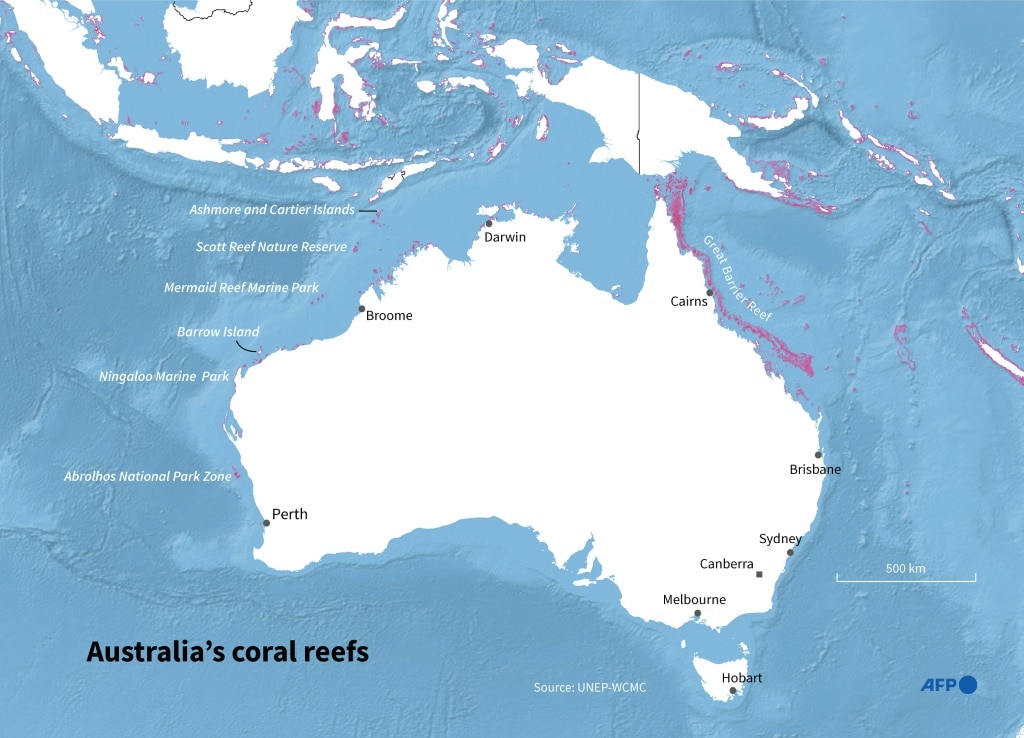Context:
An alarming mass bleaching event has gripped Ningaloo Reef, one of Australia’s most treasured marine ecosystems, off the country’s western coast. Scientists have called the event “unprecedented,” as months of marine heatwaves have caused massive sections of the reef to turn a sickly, dull white, signaling severe distress in the coral systems that inhabit this UNESCO World Heritage site.
About Ningaloo Reef:
Spanning 300 kilometers along Western Australia’s coastline, Ningaloo Reef is one of the largest fringing reefs in the world, famous for its vibrant coral ecosystems, diverse marine life, and migratory whale sharks.
For decades, it has been a haven for researchers and tourists alike, drawing attention for its pristine biodiversity. However, recent observations suggest that this awe-inspiring marine environment is now facing an existential threat due to rising ocean temperatures.
The current bleaching event is not just one of the most severe in recent memory but is also the most significant since 2011, when a similar event wreaked havoc on the reef.
About Coral Bleaching
Coral bleaching occurs when sea temperatures rise to levels that are stressful for corals. In response, the corals expel the symbiotic algae living in their tissues, known as zooxanthellae.
These algae are essential for the coral's survival, as they provide the corals with nutrients through photosynthesis, and give corals their characteristic vibrant colors.
Without the algae, the corals lose their color and become bleached, and while they may survive this condition for some time, prolonged bleaching can lead to coral death if conditions don’t improve.
Rising Ocean Temperatures:
The key factor contributing to the mass bleaching event is a prolonged marine heatwave that has driven ocean temperatures up to three degrees Celsius above average.
According to the Australian Bureau of Meteorology, these elevated temperatures have persisted over the past few months, creating an environment that has “cooked” the corals.
By mid-January, ocean temperatures surpassed the critical “bleaching threshold,” with coral species struggling to survive in water that was too warm.
The phenomenon is a stark reminder of the growing impacts of climate change on marine ecosystems worldwide. The current marine heatwave follows a disturbing pattern seen in other reef systems globally, where rising temperatures—driven by human-induced climate change—are becoming increasingly frequent and intense.
This heat stress, coupled with other environmental pressures, makes it difficult for coral reefs to recover, and can lead to long-term degradation of these delicate ecosystems.
Conclusion
Ningaloo Reef’s current mass bleaching event is an unprecedented crisis that threatens not only one of Australia’s most beloved natural wonders but also the broader ecological health of our oceans. As scientists continue to monitor the unfolding situation, the world must recognize the dire need for climate action to protect these delicate ecosystems. The fate of Ningaloo Reef—and reefs around the world—depends on it.








